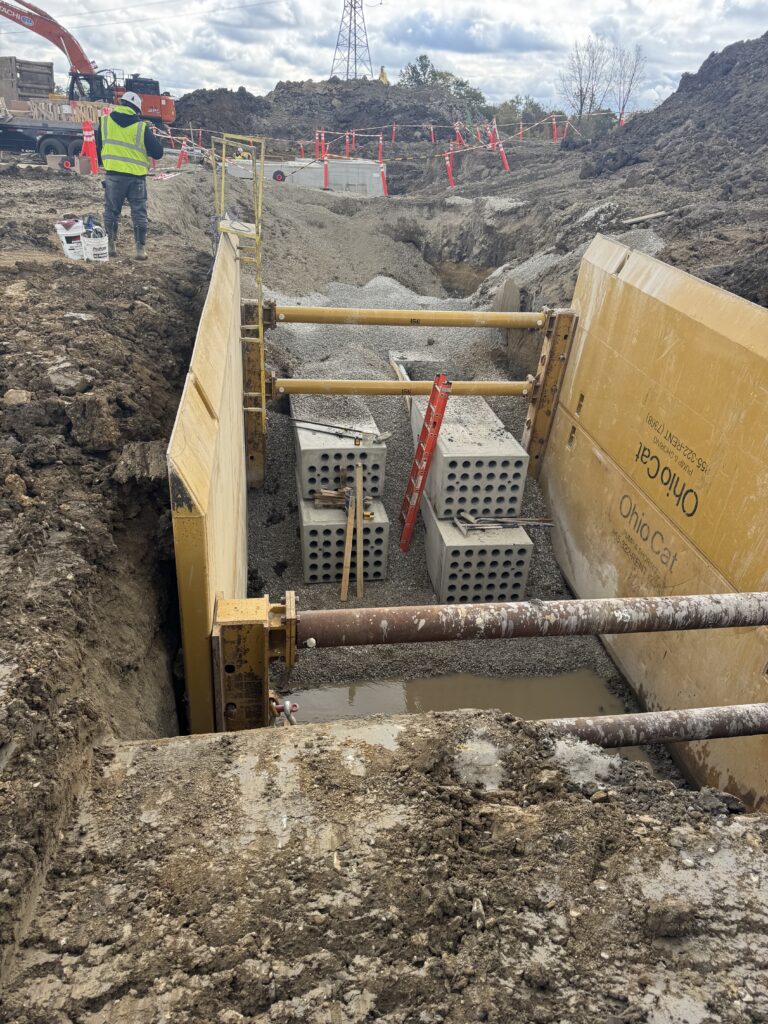For most contractors, precast lead time is the deciding factor. If a supplier can’t hit the trench schedule, nothing else matters. We hear the same story from every GC and EC we work with: the product isn’t the problem — the wait is. That’s the gap DBO was built to close.
The Reality of Precast Lead Times
Most precast manufacturers share facilities with other product lines — vaults, manholes, pipe. When demand spikes, duct banks slide to the back of the queue. Typical industry averages look like this:
| Supplier | Published Lead Time | Real-World Variance |
| Duct Bank One | 4 – 6 weeks | Up to 10 weeks when backlogged |
| ReadyDuct | 8 – 12 weeks | Often extends to 3 – 6 months when backlogged |
| Locke Solutions | 12 – 16 weeks | Up to 10 months on large data-center orders |
| Regional Precasters | 10 – 20 weeks | Inconsistent capacity, no surge capability |
Those numbers aren’t criticism — they’re the reality of batch-based manufacturing. When everyone’s chasing the same projects, the schedule gets crowded fast.
How DBO Builds Around Demand
We operate under a different model — duct banks only, designed for continuous production instead of slot scheduling.
- 320 pieces per day casting capacity across dedicated form lines.
- Four separate curing lines, cycling every eight hours.
- Stockpiling and staging yards adjacent to production — modules cured, tagged, and ready before excavation even starts.
- Parallel engineering workflow: stamped calcs released within two weeks of design approval so production never waits on paperwork.
That capacity doesn’t eliminate every variable — freight and sequencing still depend on your site — but it keeps delivery predictable even when the industry’s at peak volume.
Typical Delivery Windows
| Scope Size | Competitor Average | DBO Average Delivery |
| Standard run (< 200 LF) | 6 – 10 weeks | 4 – 6 weeks |
| Campus-scale (1 000 – 5 000 LF) | 3 – 10 months | 6 – 8 weeks |
| Multi-phase / repeat orders | Rescheduled each phase | Continuous supply from stockpiled inventory |
We don’t claim overnight turnaround — we promise consistency. If we commit to a date, the product is poured, cured, and staged long before your trench opens.
What It Means in the Field
- Reduced Idle Time: Crews aren’t waiting on trucks. When the trench is cut, modules are already on site.
- Predictable Scheduling: Superintendents can plan manpower around confirmed deliveries instead of “estimated weeks.”
- Weather Resilience: Precast sections can be stockpiled on-site, ready to set between storms.
- Program Stability: For data-center and industrial clients, consistent weekly shipments keep critical-path scopes moving without gap days.
One GC told us bluntly: “You didn’t speed the work up — you stopped it from stopping.” That’s the real impact of lead-time reliability.
Capacity You Can Count On
We’re not the biggest name in precast — we’re the one purpose-built for duct banks.
Our 320-piece daily capacity, controlled mix design, and regional staging model mean we can flex with program demand without slipping delivery dates. That’s how we meet the market: not by promising what’s impossible, but by engineering our process so “on time” is normal.



